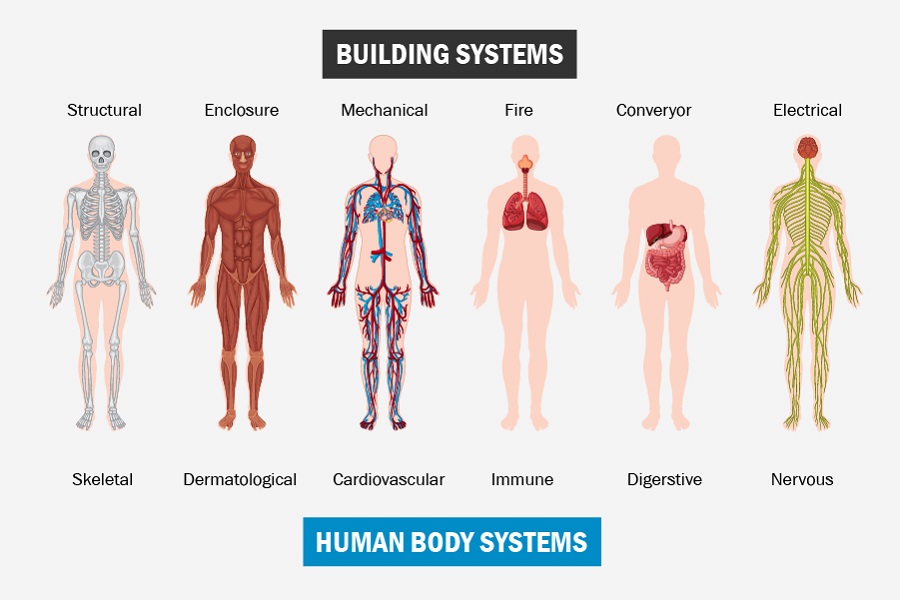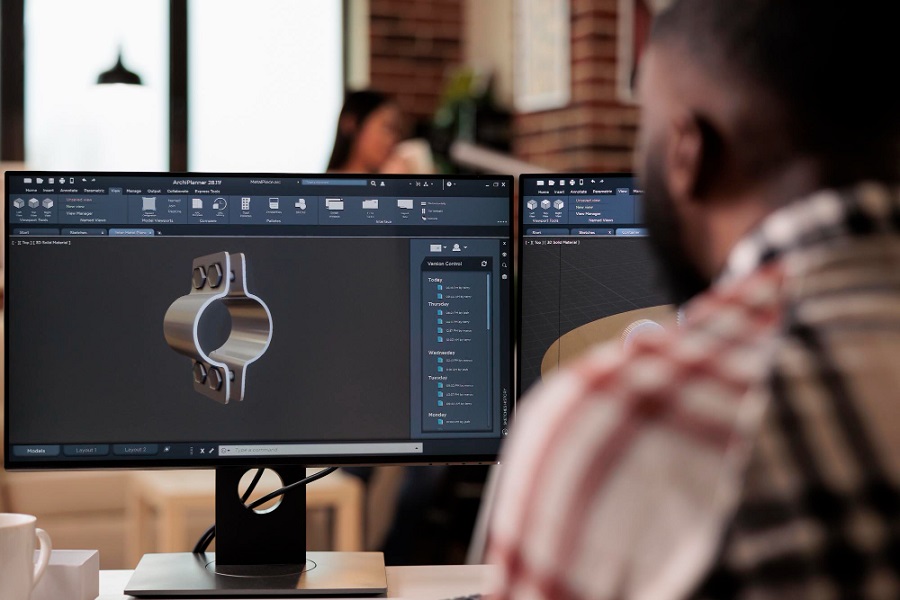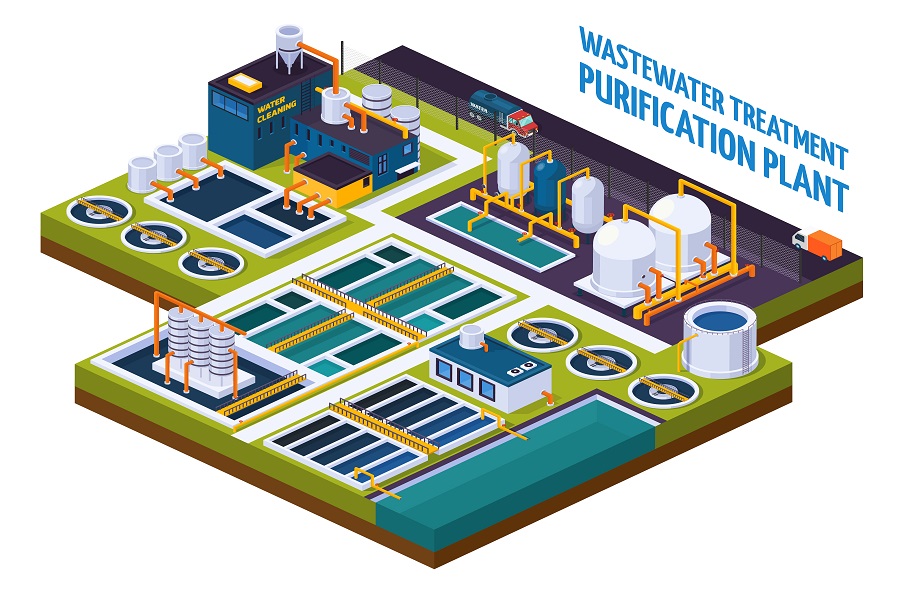When you look at a building, what comes to your mind? Perhaps its architectural beauty, captivating facade, or maybe its functionality and ease of access. But, have you ever wondered about the intriguing connection that buildings share with the human body?
In the world of architecture, the parallels between the design of buildings and the human body often go unnoticed. We never try to delve into the hidden connections that bind our buildings with our body systems. Have you ever wondered how architecture made of bricks, mortar, and stones closely resembles and functions of our body made of muscles, tissue, and bone?
This blog delves into the fascinating relationship between the architectural marvels created by humans and GOD. Learn how the two intersect to create spaces that resonate with the human experience. Though unconventional, understanding these similarities can help AEC professionals refine their art and leverage modern technologies like Building Information Modeling (BIM) to bring unmatched collaboration and coordination in building design.
Buildings and People Are Both Architectures
The human body is an architecture – a perfect structure defined by a system, just like a building. It displays the same sense of balance and symmetry that architects display while designing a building.
It functions the same way and morphs the same way too. Our skeleton, organ system, and the arrangement of muscles and tissues bear a striking resemblance to the framework of a building, its plumbing and wiring.
It’s all connected. It’s all interrelated!
1. The Building Structural System is Closely Related to the Human Skeletal System
In both cases, the primary function is to provide strength and support. The building structural system, composed of concrete, iron, and steel, mirrors the human skeletal system consisting of bones, cartilage, tendons, and ligaments. Remarkably, both systems not only provide strength but motion too. While the human skeletal system facilitates movement, the building’s structural design ensures stability and endurance.
When it comes to construction, Structural detailing plays a pivotal role in determining how the building responds to external forces and internal stresses. By carefully detailing structural steel components, it ensures that the building can withstand the test of time, much like the human skeletal structure.
2. Building Enclosure System Mimics Human Dermatological System
The façade of the building acts as a protective barrier against external elements. The walls, roof, and windows all work together to shield the building from weather and energy loss. Something akin to the human dermatological system. Here the skin, hair, nails, and glands act as the first line of defence against bacteria, injury, and sunlight. Both systems share the common responsibility of regulating temperature.
3. The Building Mechanical System and the Human Cardiovascular System Share a Common Thread
The fundamental similarity lies in the concept of circulation. Both systems are dedicated to ensuring the smooth flow of essential components across their structures. While the building mechanical system circulates air and water through HVAC and plumbing systems, the human cardiovascular system helps the body receive oxygen, nutrients, and eliminates waste. Both systems involve the use of pumps, mechanical or biological, to maintain optimal conditions.
Thus, when it comes to Building Mechanical System, meticulous planning and execution is extremely important. Mechanical Engineering Services can help solve design and drafting problems, making sure that the HVAC and plumbing systems are accurately placed across the architectural framework and are aligned with the evolving needs of the building and its occupants.
4. Building Fire Protection System and Human Immune System Share Common Goals
Both systems have a common role – to detect and respond to threats and safeguard the integrity of the overall structure – from fire within a building and from harmful pathogens within the body. The building fire protection system employs devices like Fire Alarm, Smoke Detectors and Fire Sprinklers to prevent the spread of fire. Similarly, the human immune system deploys a network of cells and organs to protect our body against pathogens.
5. Both the Building Conveyor System and the Human Digestive System Involve the Movement of Materials
The building conveyor system, a mechanical process, transports goods within a structure using components like belts and rollers. On the other hand, the human digestive system is a biological process that breaks down food into nutrients. Although different in nature, both systems illustrate the vital role of material movement.
6. The Building Electrical System and the Human Nervous System Perform the Role of Transmitting Electrical Impulses
In the built environment, the electrical system efficiently distributes electricity through wires and circuits, ensuring a seamless flow of energy. This mirrors the intricate functioning of the human nervous system, where information is transmitted through electrical impulses within the body.
Drawing Inspiration from the Human Body for Innovative Design and Construction
The analogies between building systems and the human body show the interconnected nature of our structures and the synergy required for both to function efficiently.
Key lessons from the human body include emphasis on structural integrity and coordinated, clash-free internal functioning of organs.
Thus, as we construct and innovate, we need to foster efficiency and resilience in our built environment. Today, Building Information Modeling (BIM) has emerged as a transformative tool that facilitates efficient clash detection and coordination, and information accessibility across the entire building structure – much like our central nervous systems.
This digital approach ensures that architects and collaborators can harmoniously work together, just as the systems within our bodies collaborate to sustain life.
It’s time to blend innovation and efficiency into your building structures. Want to know how? Schedule a consultation with Enginerio and discover the endless possibilities in building designing, detailing, and modeling. Let’s together embark on a journey of architectural excellence!






